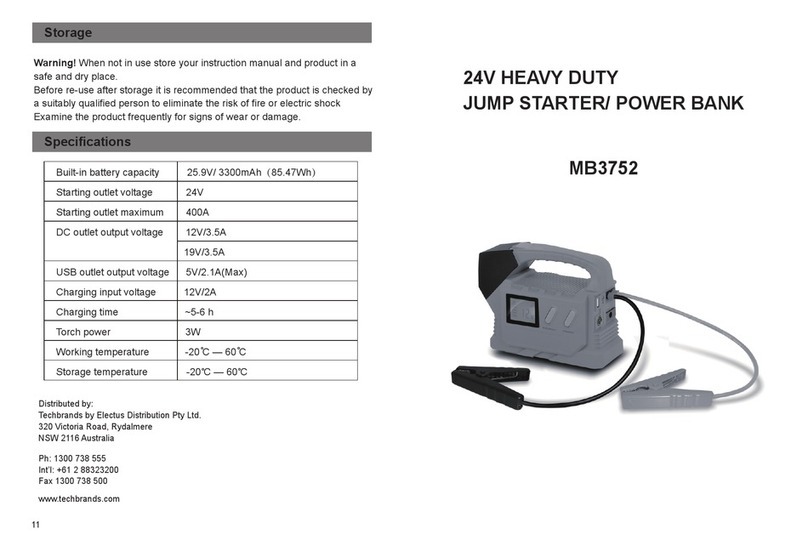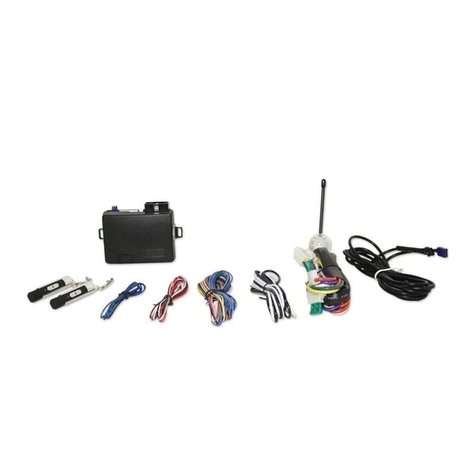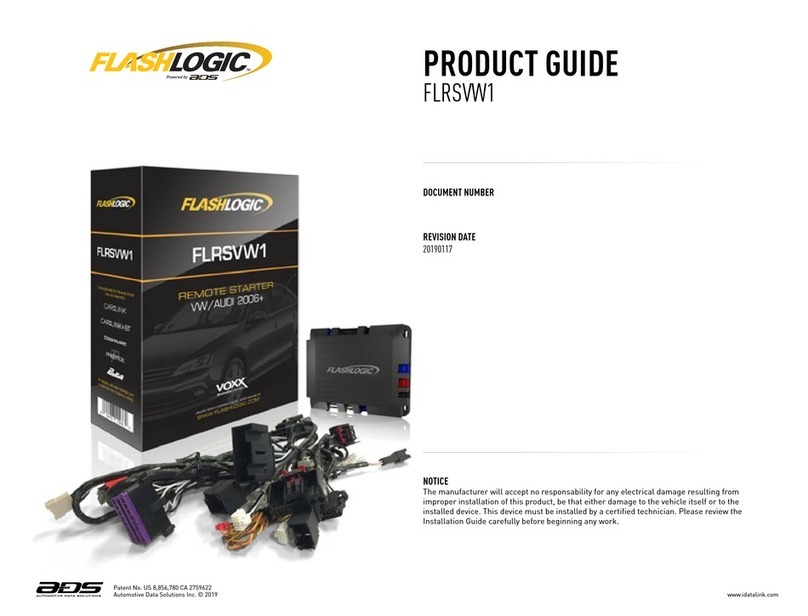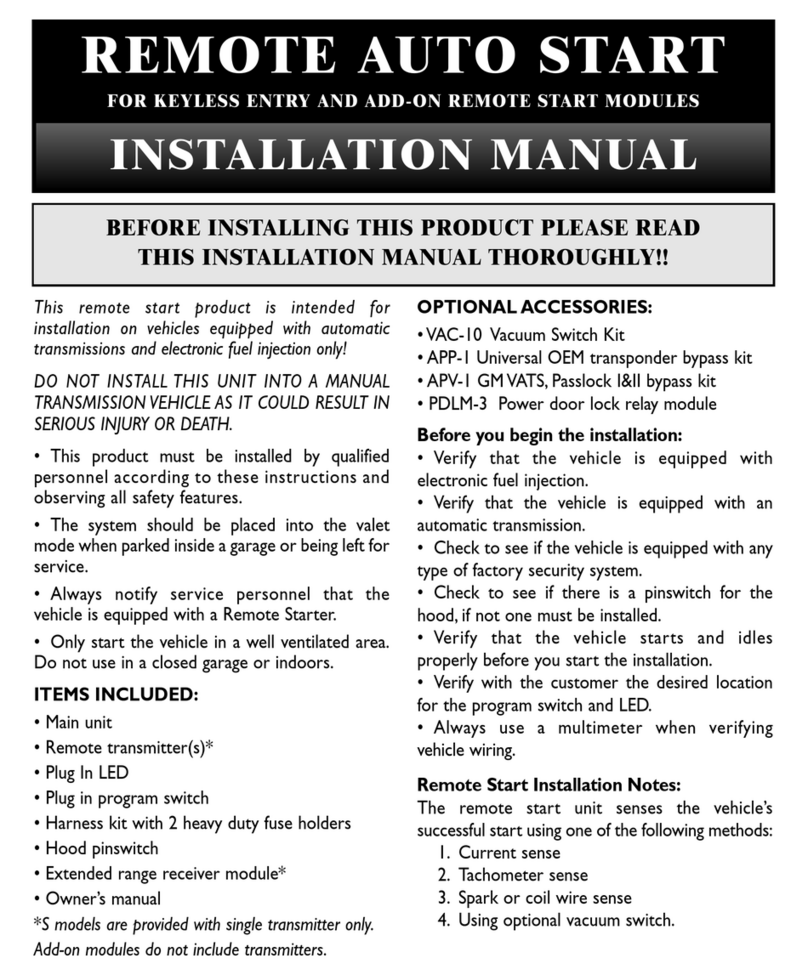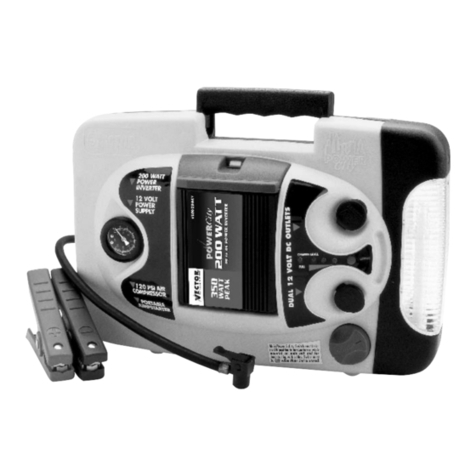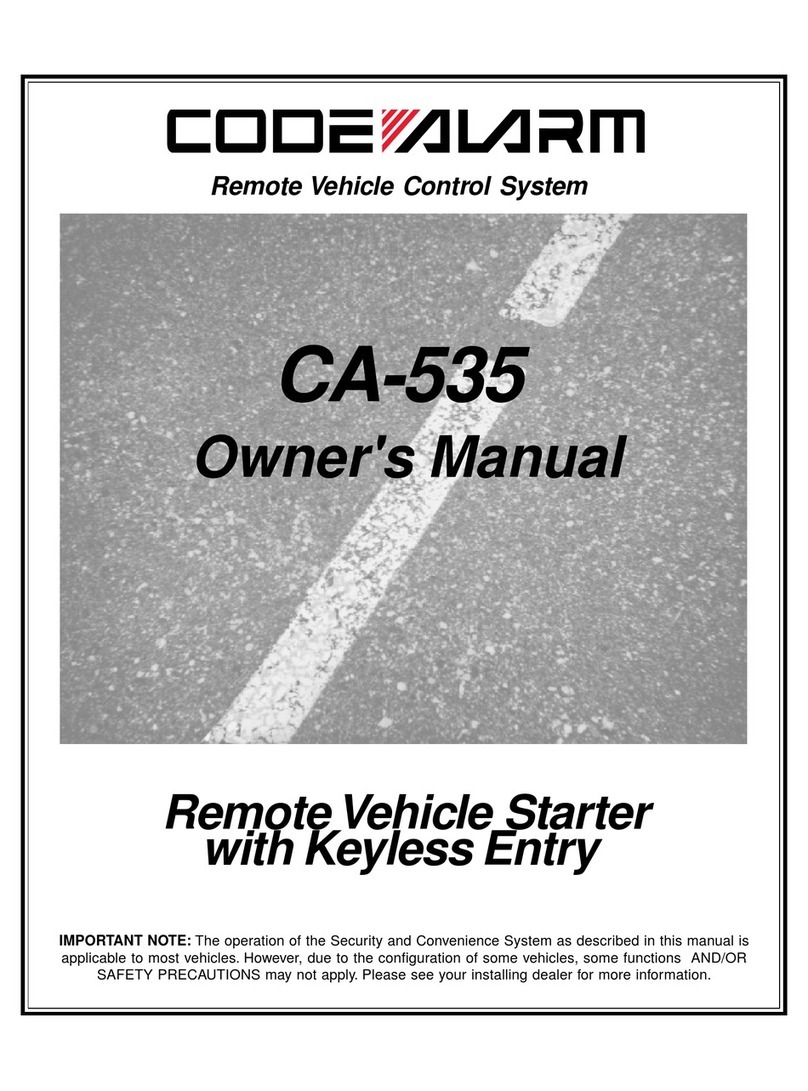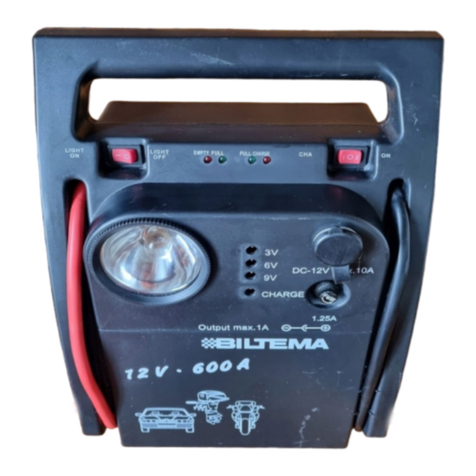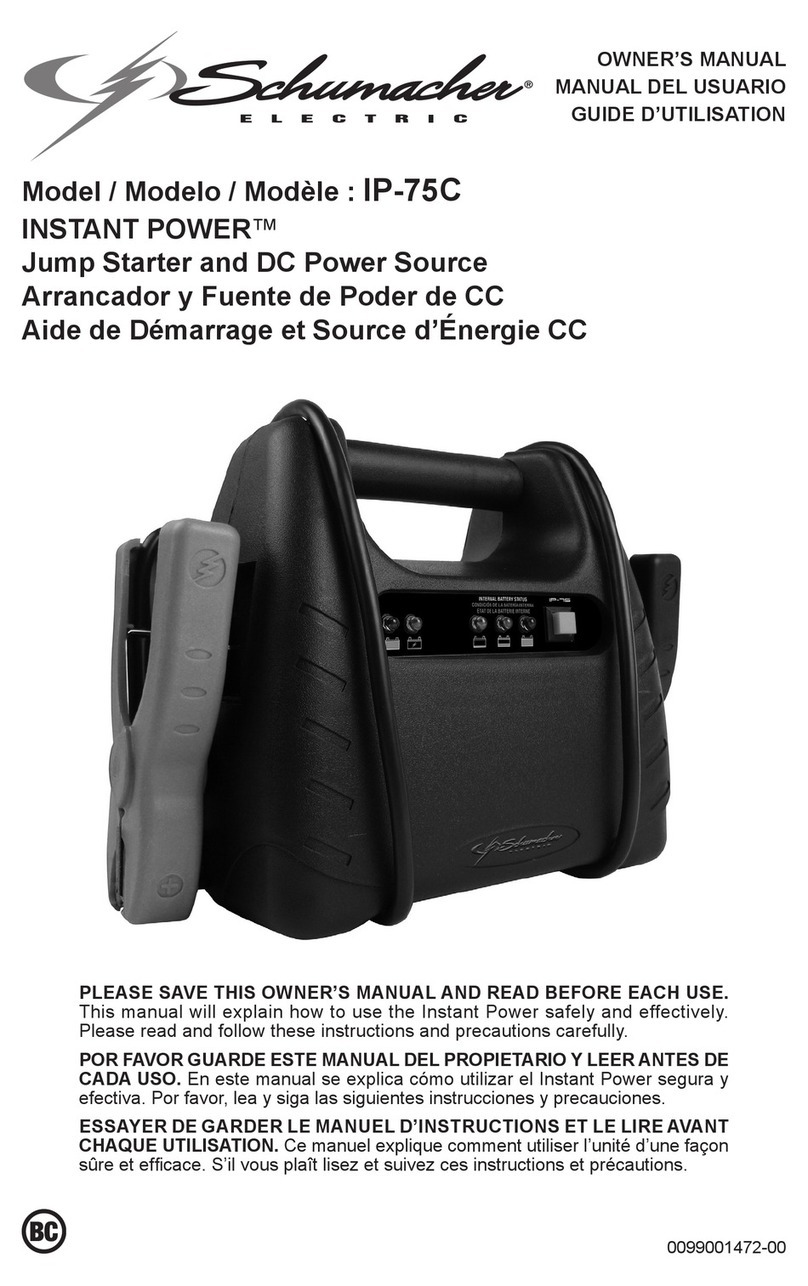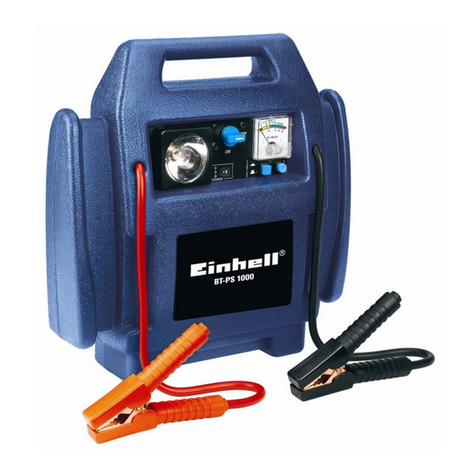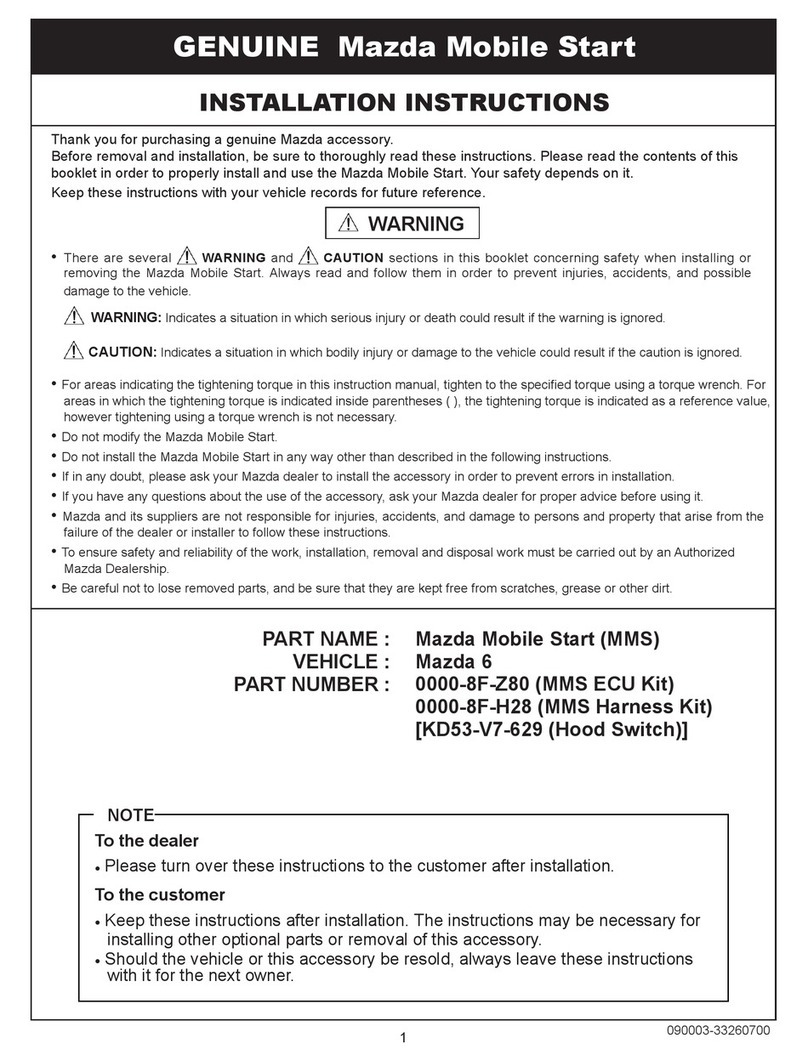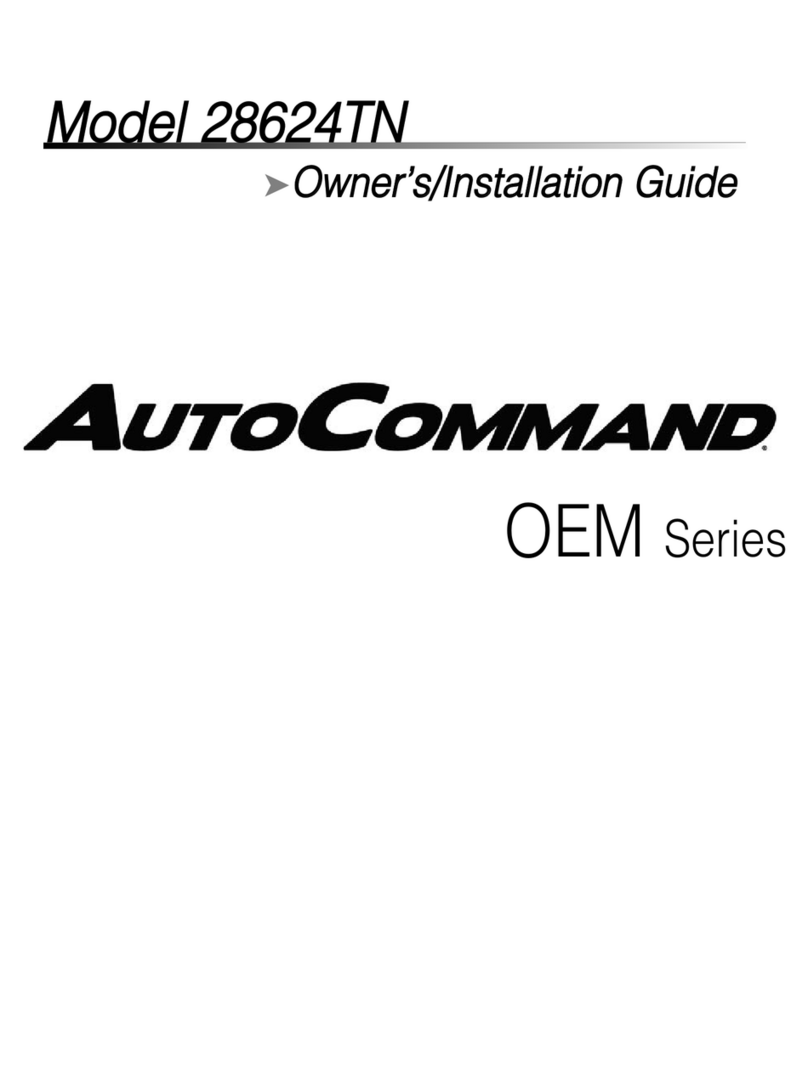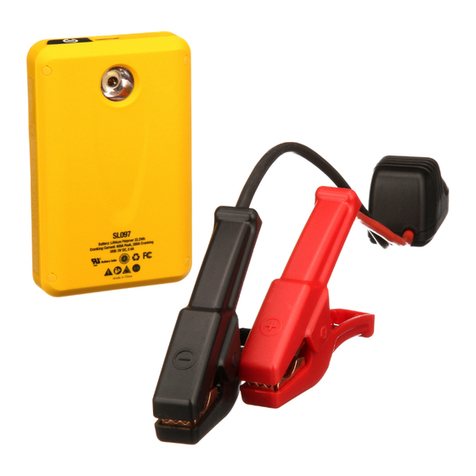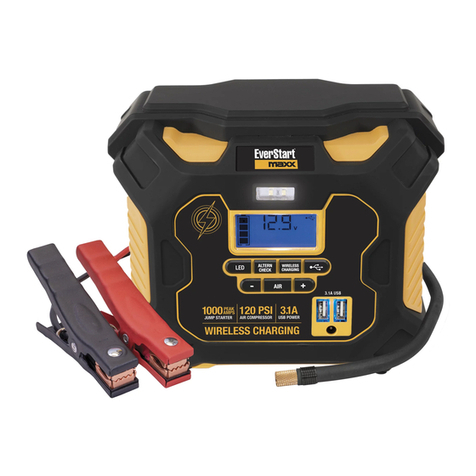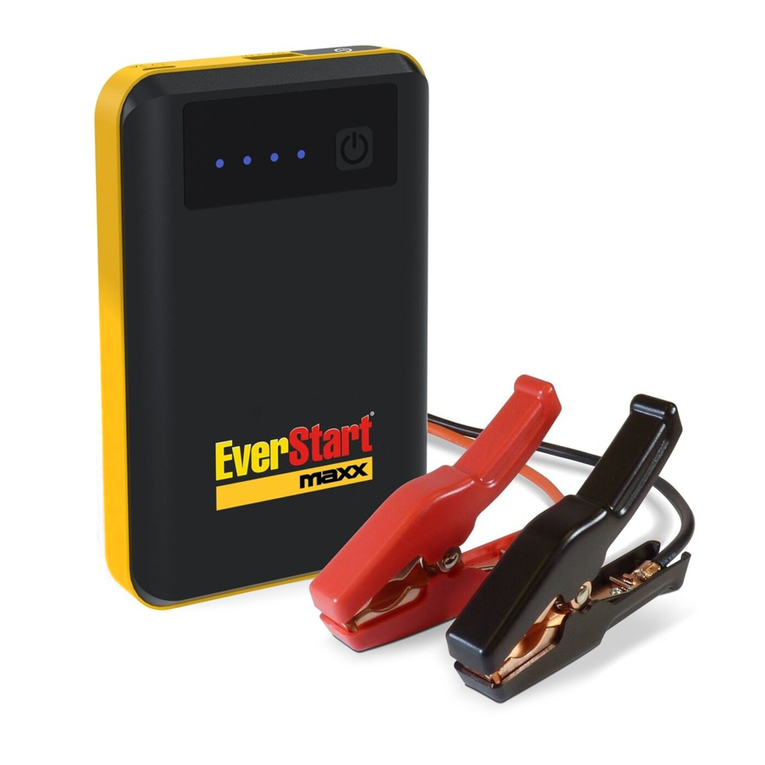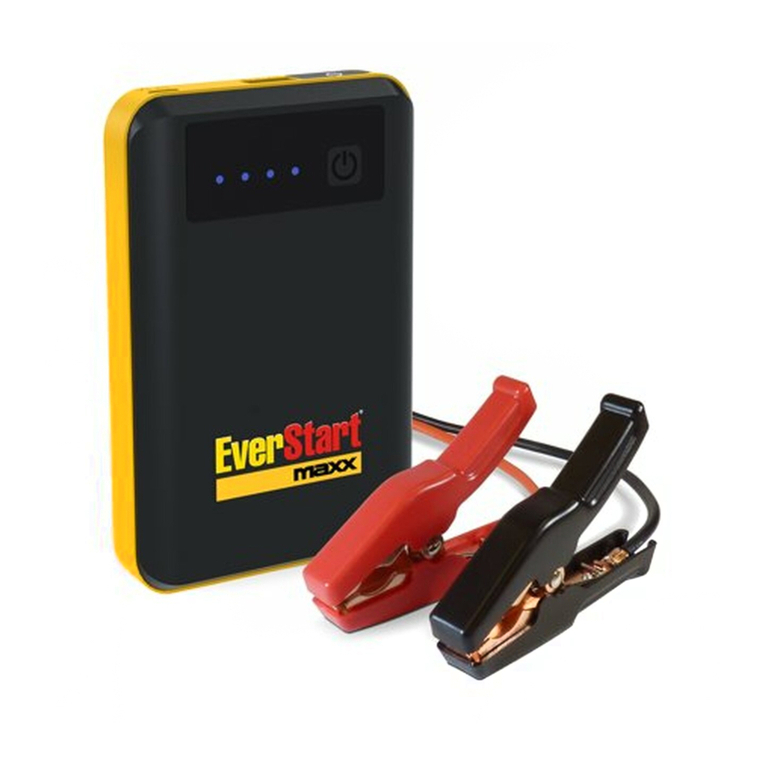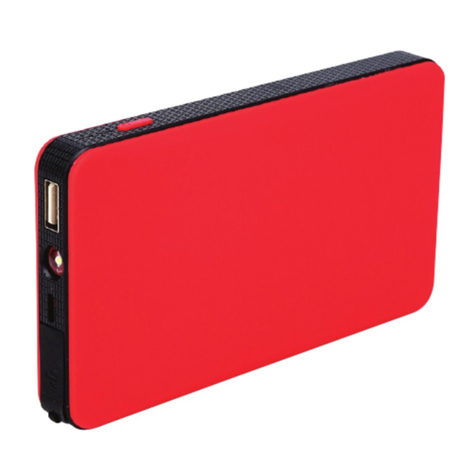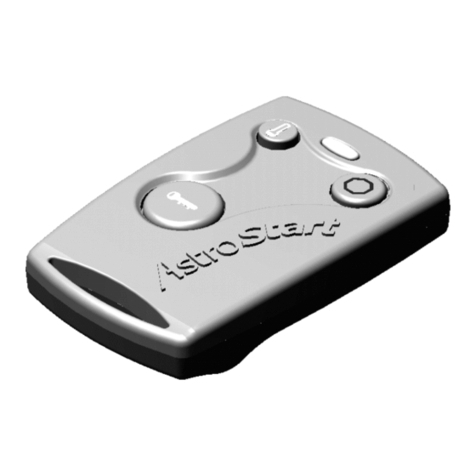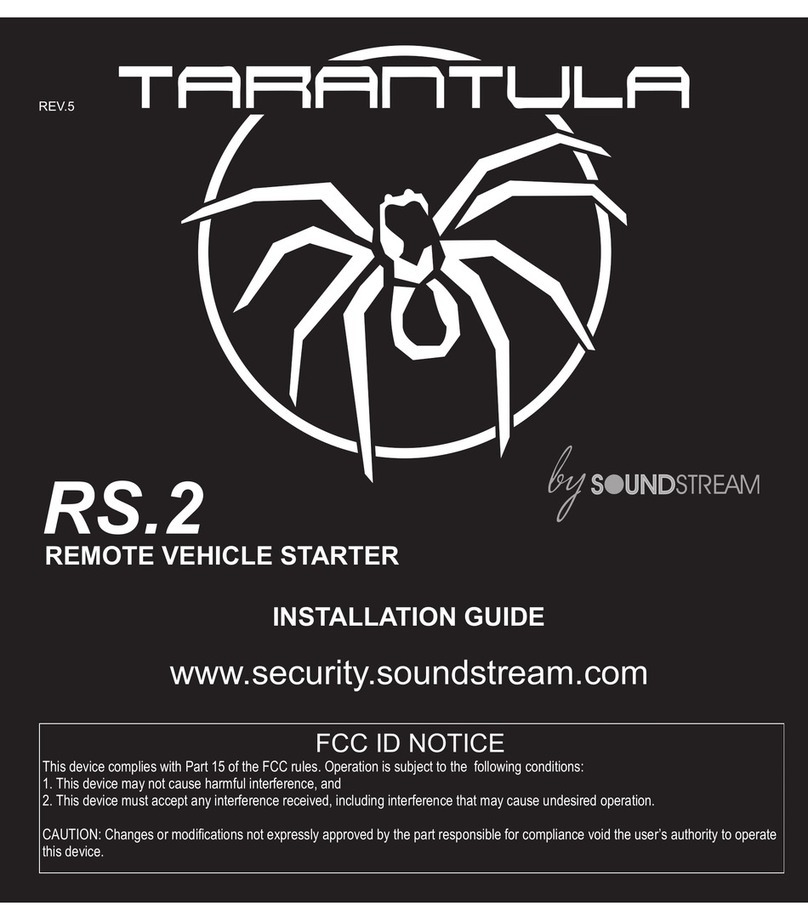
14 15
Número de Catálogo JUS750CE Contáctenos / 1-877-571-2391 Número de Catálogo JUS750CE Contáctenos / 1-877-571-2391
NORMAS DE SEGURIDAD
/ DEFINICIONES
PELIGRO: Indica una situación de peligro inminente que, si no se evita, provocará la
muerte o lesiones graves.
ADVERTENCIA: Indica una situación de peligro inminente que, si no se evita,
provocará la muerte o lesiones graves.
PRECAUCIÓN: Indica una situación de peligro potencial que, si no se evita, puede
provocar daños a la propiedad.
RIESGO DE OPERACIÓN INSEGURA. Cuando se utilizan herramientas
o equipos, siempre se deben respetar las precauciones de seguridad para reducir
el riesgo de lesiones personales. La operación, el mantenimiento o la modificación
incorrectos de herramientas o equipos pueden provocar lesiones graves y daños a la
propiedad. Las herramientas y los equipos están diseñados para usos determinados.
Fabricante recomienda encarecidamente que NO se modifique este producto y que NO
se utilice para ningún otro uso que aquél para el que fue diseñado. Lea y comprenda
todas las instrucciones operativas y las advertencias antes de utilizar cualquier
herramienta o equipo.
LEA TODAS LAS
INSTRUCCIONES
ADVERTENCIA: Lea todas las instrucciones antes de operar el fuente de
energía. El incumplimiento de todas las instrucciones enumeradas a continuación
puede provocar una descarga eléctrica, un incendio o lesiones graves.
INSTRUCCIONES
IMPORTANTES DE
SEGURIDAD
ADVERTENCIAS E INSTRUCCIONES DE
SEGURIDAD GENERALES
• Esta unidad fue diseñada para el uso domestico
ADVERTENCIA – Riesgo de incendios, descargas eléctricas, peligro de explosión o
lesiones a personas o propiedades:
• Evite las condiciones ambientales peligrosas. No utilice artefactos en zonas húmedas
o mojadas. No utilice artefactos bajo la lluvia.
• Mantenga a los niños alejados. Los visitantes deben mantenerse a cierta distancia del
área de trabajo.
• Use la vestimenta adecuada. No use ropas holgadas o joyas. Pueden atascarse
en las piezas en movimiento. Se recomienda utilizar guantes de goma y calzado
antideslizante considerable al trabajar al aire libre. Recójase y cubra el cabello largo.
• Guarde los artefactos que no utilice en el interior. Cuando no los utilice, los artefactos
deben guardarse bajo techo, en un lugar seco, alto o bajo llave, lejos del alcance de
los niños.
• No tire del cable. Nunca transporte el aparato por el cable ni lo jale para desconectarlo
del tomacorriente. Mantenga el cable alejado del calor, el aceite y los bordes afilados.
• Desconecte los aparatos. Desconecte el aparato de la fuente de energía cuando no
lo utilice, antes de realizar un mantenimiento y al cambiar accesorios como hojas y
elementos semejantes.
• La protección del interruptor de corte por falla a tierra (GFCI) debe aplicarse a los
circuitos o los tomacorrientes que se utilizarán. Hay tomacorrientes con protección
GFCI incorporada que pueden utilizarse para tomar esta medida de seguridad.
• Uso de accesorios y suplementos. El uso de accesorios o dispositivos no
recomendados para utilizar con este aparato puede resultar peligroso. Consulte la
sección “Accesorios”de este manual para obtener detalles adicionales.
• Manténgase alerta. Use el sentido común. No opere este equipo si está cansado o
con impedimentos.
• Compruebe para saber si hay piezas dañadas. Cualquier parte que esté dañada debe
ser reemplazado por el fabricante antes de su uso posterior. No utilice la herramienta
si el interruptor no le da vuelta por intervalos. Contacto con el fabricante en 1-877-
571-2391 para más información.
• No funcione el aparato cerca de líquidos inflamables o en atmósferas gaseosas o
explosivas. Los motores de estas herramientas normalmente chispean, y las chispas
pueden encender los vapores.
• Nunca sumerja esta unidad en agua; no la exponga a la lluvia, la nieve, ni la use
cuando esté mojada.
• Para reducir el riesgo de descarga eléctrica, desconecte la unidad de cualquier
fuente de energía antes de intentar limpiarla o realizarle un mantenimiento. Apagar los
controles sin desenchufar la unidad no reducirá este riesgo.
• Este equipo emplea piezas (interruptores y relés) que producen arcos o chispas. Por
lo tanto, si utiliza la unidad en una cochera o un área cerrada, DEBE colocarla a no
menos de 457 mm (18 pulgadas) por encima del piso.
• No inserte los objetos extranjeros en los puertos USB.
INSTRUCCIONES DE SEGURIDAD
ESPECÍFICAS PARA CARGAR ESTA
UNIDAD
• IMPORTANTE: Esta unidad se entrega en un estado parcialmente cargado. Cargue por
completo la unidad con un cable de extensión doméstico durante 24 horas o hasta que
el icono de estado de la batería muestre 4 barras sólidas antes de usarlo por primera
vez. No se puede exceso de carga la unidad con el método de carga de CA.
• Para recargar esta unidad, utilice sólo el cargador incorporado CA.
• Todas las funciones deben apagarse cuando la unidad se está cargando o no está en
uso. Asegúrese de que todos los interruptores estén en la posición de apagado (OFF)
antes de realizar la conexión a una fuente de energía o carga.
CABLES DE EXTENSIÓN:
ADVERTENCIA: El uso de un cable de extensión incorrecta podría dar lugar a un
riesgo de fuego y descarga eléctrica. Al usar un cable de extensión, cerciórese de que
los pernos del cable de extensión son el mismo número, tamaño y forma que ésos en
el cargador; y esté seguro de utilizar uno bastante pesado para llevar la corriente que su
producto dibujará. Un cable de menor capacidad provocará una disminución en el voltaje
de la línea, lo cual producirá una pérdida de potencia y sobrecalentamiento. La siguiente
tabla muestra la medida correcta que debe utilizar según la longitud del cable y la
capacidad nominal en amperios indicada en la placa. En caso de duda, utilice el calibre
inmediatamente superior. Cuanto menor es el número de calibre, más grueso es el cable.
CALIBRE MÍNIMO PARA LOS JUEGOS DE CABLES
Voltios Largo total del cable en pies
120V 0-25 26-50 51-100 101-150
(0-7.6m) (7.6-15.2m) (15.2-30.4m) (30.4-45.7m)
240V 0-50 51-100 101-200 201-300
(0-15.2m) (15.2-30.4m) (30.4-60.9m) (60.9-91.4m)
Grado del amperio Longitud de la cable de extensión
Más No más 0’-25’ 26’-50’ 51 ’-100 ’ 101’ -150 ’
que que Calibrador de alambre Americano (AWG)
0 - 6 18 16 16 14
6 - 10 18 16 14 12
10 - 12 16 16 14 12
12 - 16 14 12 No recomendado
• Cuando se utiliza un cable prolongador, asegúrese de que:
– as patas del cable prolongador sean del mismo número, el mismo tamaño y la
misma forma que las del cargador,
– el cable prolongador posea los conductores correctos y esté en buenas
condiciones eléctricas,
– la medida del conductor sea suficientemente grande para la capacidad nominal
en amperios.
PRECAUCIÓN – Para reducir el riesgo de lesiones o daño a la propiedad: Cuando
desconecte el cable de extensión desde el cargador de CA de 120 voltios incorporado
o la toma de CA, tire por el conectador y no por el cable.
INSTRUCCIONES DE SEGURIDAD
ESPECÍFICAS PARA AUXILIARES DE
ARRANQUE
ADVERTENCIA – Peligro de estallido
No utilice la unidad para cargar las baterías secas que se usan normalmente con los
aparatos domésticos. Estas baterías pueden estallar y provocar lesiones a las personas
y daños a la propiedad. Use la unidad para carga/ refuerzo solamente de una batería
de plomo-ácido. No está diseñada para proveer energía a un sistema eléctrico de bajo
voltaje que no sea para arrancar un motor.
• El uso de un dispositivo no suministrado, recomendado o vendido por el fabricante
específicamente para el uso con esta unidad puede provocar riesgo de descarga
eléctrica y lesiones a las personas.
ADVERTENCIA: Riesgo de gases explosivos
• Trabajar cerca de una batería de plomo ácido es peligroso. Las baterías generan gases
explosivos durante su funcionamiento normal. Por esta razón, es muy importante que
siempre lea este manual antes de utilizar el puente auxiliar de arranque y que siga las
instrucciones con exactitud.
• Para reducir el riesgo de explosión de la batería, siga estas instrucciones y las
publicadas por el fabricante de la batería y el fabricante de cualquier equipo que tenga
la intención de utilizar cerca de la batería. Revise las indicaciones sobre precauciones
en estos productos y en el motor.
PRECAUCIÓN – Para reducir el riesgo de lesiones o daño a la propiedad:
• NUNCA INTENTE ARRANCAR MEDIANTE PUENTE NI CARGAR UNA BATERÍA
CONGELADA.
• Los vehículos que tienen sistemas computarizados incorporados pueden resultar
dañados si la batería del vehículo se arranca mediante puente. Antes de arrancar
mediante puente, lea el manual del cliente del vehículo para confirmar que la ayuda
externa para arrancar es adecuada.
• Nunca fume o permita que haya una chispa o llama cerca de la batería, el motor o la
central de energía.
• Manténgase alejado de las paletas de ventilador, correas, poleas y otras partes que
pueden provocar lesiones a las personas.
• Quítese los elementos personales metálicos, como anillos, pulseras, collares y relojes
cuando trabaja con una batería de plomo-ácido. Una batería de plomo-ácido puede
producir un cortocircuito con bastante corriente como para soldar un anillo u objeto
metálico similar a la piel y provocar una quemadura grave.
• No use ropa de vinilo cuando arranque un vehículo mediante puente. La fricción
puede provocar chispas peligrosas a causa de la electricidad estática.
• Tenga mucho cuidado de no dejar caer una herramienta de metal sobre la batería.
Puede ser que producir chispas o un cortocircuito en la batería o en otra parte
eléctrica y podría causar una explosión.
• Los procedimientos de arranque del motor sólo deben realizarse en un área segura,
seca y bien ventilada.
• Almacene siempre las pinzas de la batería cuando no se usa. Nunca toque las pinzas
de la batería entre sí. Esto puede generar chispas peligrosas, arcos eléctricos o
explosión.
• Cuando use esta unidad cerca de la batería y el motor del vehículo, coloque la unidad
sobre una superficie plana y estable, y asegúrese de mantener todas las pinzas, los
cables, la ropa y las partes del cuerpo alejados de los elementos móviles del vehículo.
• Nunca deje que las pinzas roja y negra se toquen entre sí o con otro conductor
metálico común, esto podría provocar daños a la unidad o crear un riesgo de chispas/
explosión.
– Para los sistemas con negativo a tierra, conecte la pinza del positivo (roja) al borne
sin conexión a tierra de la batería y la pinza del negativo (NEGRA) al bastidor
del vehículo o al bloque del motor, lejos de la batería. No conecte la pinza al
carburador, las cañerías de combustible o a las piezas de chapa de la carrocería.
Conecte a una pieza de metal sólida del bastidor o del bloque del motor.
– Para los sistemas con positivo a tierra, conecte la pinza del negativo (negra) al
borne sin conexión a tierra negativo de la batería y la pinza del positivo (roja) al
bastidor del vehículo o al bloque del motor, lejos de la batería. No conecte la pinza
al carburador, las cañerías de combustible o a las piezas de chapa de la carrocería.
Conecte a una pieza de metal sólida del bastidor o del bloque del motor.
• Si las pinzas están conectadas incorrectamente con respecto a polaridad, la pantalla
LCD retroiluminada demostrará el icono de estado de la batería, el indicador del
voltaje, y los iconos de pinzas. El icono del fallo, las símbolos “+”y “–”y los iconos
de polaridad inversa destellará y la unidad emitirá una alarma continua hasta que se
desconectan las pinzas. Desconecte y vuelva a conectar las pinzas de la batería con
la polaridad correcta.
• Siempre desconecte primero el cable del puente del negativo (negro) y luego el cable
del puente del positivo (rojo), excepto para los sistemas con positivo a tierra.
• No exponga la batería al fuego o a un calor intenso, porque puede explotar. Antes
de eliminar la batería, proteja los terminales expuestos con cinta aislante para trabajo
pesado para evitar cortocircuitos (un cortocircuito puede producir lesiones o incendio).
• Coloque esta unidad lo más lejos posible de la batería que los cables permitan.
• Nunca permita que el ácido de la batería entre en contacto con esta unidad.
• No opere esta unidad en un área cerrada ni restrinja la ventilación de alguna forma.
• Este sistema está diseñado para ser utilizado únicamente en vehículos con sistema de
batería de CC de 12 voltios. No lo conecte a un sistema de batería de 6 o 24 voltios.
• Este sistema no está diseñado para ser utilizado en reemplazo de una batería de
vehículo. No intente hacer funcionar un vehículo que no tenga la batería instalada.
• El exceso de revoluciones del motor puede dañar el mecanismo de arranque de un
vehículo. Si el motor no arranca después de la cantidad recomendada de intentos,
abandone los procedimientos de arranque mediante puente y busque otros problemas
que deban solucionarse.
• No utilice este puente auxiliar de arranque en una moto de agua. No fue diseñado
para prácticas marinas.
• Si bien esta unidad contiene una batería que no derrama, se recomienda que la
unidad se conserve parada durante el almacenamiento, el uso y la recarga. Para evitar
daños posibles que puedan acortar la duración de la unidad, protéjala de la luz solar
directa, el calor directo o la humedad.
INSTRUCCIONES DE SEGURIDAD
ESPECÍFICAS PARA
LOS PUERTOS USB
• No introduzca objetos extraños dentro ya sea el puertos USB.
• No conecte un concentrador USB y no conecte más de un dispositivo electrónico
personal a cada puerto USB.
• No utilice esta unidad para operar los aparatos que requieren más de 2.1 amperios en
total para operar desde los puertos USB.
• Una cierta electrónica USB-accionada hogar no funcionará con esta unidad.
INSTRUCCIONES DE SEGURIDAD
ESPECÍFICAS PARA COMPRESORES
PRECAUCIÓN – Para reducir el riesgo de lesiones o daño a la propiedad:
• Nunca deje el compresor sin supervisión mientras se está usando.
• No funcione el aparato para inflar con aire continuamente por más de largo que
aproximadamente 10 minutos, dependiendo de temperaturas ambiente, como puede
recalentarse. Esto podría dañar el compresor. Siga las instrucciones de la sección
“Compresor portátil.”
ADVERTENCIA – Peligro de estallido: Los artículos que estallan pueden provocar lesiones graves.
• Siga cuidadosamente las instrucciones en los artículos de ser inflado.
• Nunca exceda la presión recomendada enumerada en instrucciones en los artículos
de ser inflado. Si no se da ninguna presión, contacto con el fabricante del artículo
antes de inflar.
• Supervise la presión siempre sobre la pantalla LCD retroiluminada.
PRIMEROS AUXILIOS
Cuando trabaje con baterías de plomo-ácido, asegúrese de que siempre haya ayuda
inmediata disponible en caso de accidente o emergencia.
Utilice siempre protección para los ojos al emplear este producto; el contacto con
el ácido de la batería puede producir ceguera o quemaduras graves. Conozca los
procedimientos de primeros auxilios para el caso de contacto accidental con el ácido
de la batería.
Tenga al alcance mucha agua potable y jabón en el caso de que el ácido de la batería
entre en contacto con la piel.
• Piel: Si el ácido de la batería entra en contacto con la piel, enjuáguese
inmediatamente con agua, luego lávese con agua y jabón. Si se presenta
enrojecimiento, dolor o irritación, busque asistencia médica de inmediato.
• Ojos: Si el ácido de la batería entra en contacto con los ojos, lávese los ojos
inmediatamente durante 15 minutos como mínimo y busque asistencia médica de
inmediato.
• Indicador de cristal líquido del LCD: Si es líquido el cristal viene en
contacto con su piel: Lave el área apagado totalmente con el un montón de agua.
JUS750CE_Manual_ENSP_042820.indd 14-15JUS750CE_Manual_ENSP_042820.indd 14-15 4/29/2020 2:16:41 PM4/29/2020 2:16:41 PM
